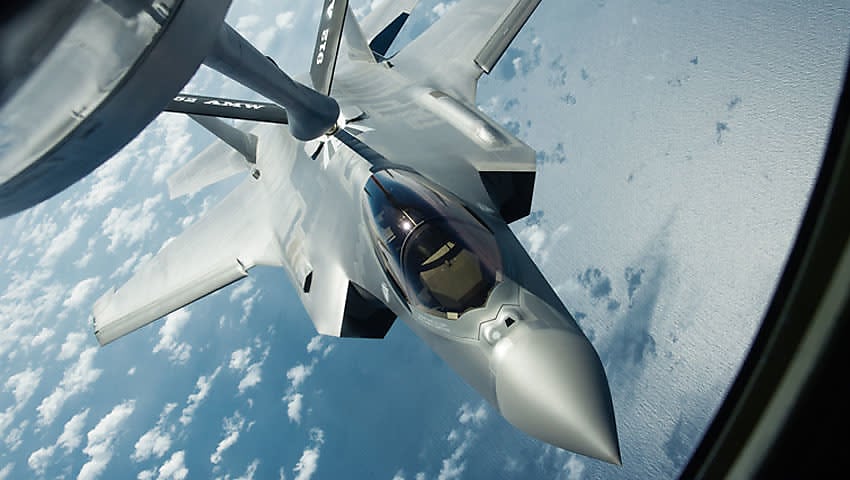The US Air Force has used the latest deployment of F-35 Joint Strike Fighters to protect NATO’s eastern borders as an important learning exercise with the aircraft gathering critical adversarial information.
To continue reading the rest of this article, please log in.
Create free account to get unlimited news articles and more!
Active US Air Force personnel attached to the 388th Fighter Wing and reserve personnel from the US Air Force Reserve’s 419th Fighter Wing have been at the forefront of NATO’s air defence mission over the eastern skies of Europe, with one critical mission: learn as much about Russian weapons systems as possible.
In doing so, the deployed F-35s leveraged the extensive sensor fusion capabilities of the platform to vacuum up as much electronic data as possible from the surface-to-air missiles and aircraft dotting eastern Europe to build a map to guide NATO operations — and if the situation spilled into NATO countries, to add some muscle.
Colonel Craig Andrle, 388th Fighter Wing Commander, said during an interview with the US Air Force Times, “We weren’t crossing the border. We’re not shooting anything or dropping anything. But the jet is always sensing, gathering information. And it was doing that very, very well.”
The mission gave the US Air Force a chance to hone its new short-notice approach to deployments.
The air defence and intelligence, surveillance and reconnaissance (ISR) missions also illustrated advances in the F-35′s ability to communicate with the joint force and quickly adjust to unrecognised threats, in doing so, it offered new insight into what the jets are still missing, as the military warns of future fights with Russia or China.
Under the new force-generation model, squadrons are supposed to move through four six-month phases: resetting from their most recent travel, training locally as a unit, participating in larger exercises, and going on alert.
This approach aims to give units enough time to rest, train, and maintain their jets between deployments.
“We could get a phone call and leave in a matter of days — to an unknown location, for an indeterminate amount of time,” Col Andrle explained.
F-35s are designed to block and destroy air defences that could down allied aircraft, paving the way for other aircraft to enter enemy territory. The aircraft also soaks up electronic emissions from nearby radars to compile a picture of friendly and unfriendly forces in the area.
US Air Force personnel witnessed these key capabilities as the aircraft conducted interdiction and ISR missions over Poland, Lithuania, and Latvia, close to the Russian territory and city of Kaliningrad.
The operations weren’t without their challenges, as the new generation of Russian air defence platforms have sophisticated digital ways of masking their presence and confusing sensors and effectors, however, the F-35 performed flawlessly.
Col Andrle explained, “We’re looking at an SA-20 [NATO’s name for the S-300 surface-to-air missile system]. I know it’s an SA-20. Intel says there’s an SA-20 there, but now my jet doesn’t ID it as such, because that SA-20 is operating, potentially, in a war reserve mode that we haven’t seen before.”
Despite this, the F-35 flagged the object for troops who updated and re-uploaded the data into the jet, following which, NATO aircraft knew what they were looking at and how to geolocate it, making it harder to take NATO forces by surprise.

 Login
Login







